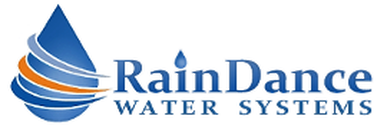Chloride
What is Chloride?
Chloride is a considered a secondary contaminant (not health threatening) by the United States Environmental Protection Agency that may result in aesthetic problems, such as color, taste, or odor, in drinking water sources.
What are the Secondary Maximum Contaminant Levels (SMCL) for Chloride?
The Secondary Maximum Contaminant Levels are established only as guidelines to help consumers manage undesirable contaminants causing bad taste, odor, or color. The SMCL for Chloride in drinking water is 250 mg/L.
What are the problems associated with Chloride above the SMCL?
High levels of Chloride in drinking water sources may result in a salty taste. Water high in sodium chloride can damage plants, if used for watering or irrigation.
What treatment methods have been proven to be effective for removal or inactivation?
Reverse osmosis filtration has been proven most effective at removing Chloride.
What solutions does RainDance Water Systems have to offer?
Check out our variety of reverse osmosis water treatment systems here:
What is Chloride?
Chloride is a considered a secondary contaminant (not health threatening) by the United States Environmental Protection Agency that may result in aesthetic problems, such as color, taste, or odor, in drinking water sources.
What are the Secondary Maximum Contaminant Levels (SMCL) for Chloride?
The Secondary Maximum Contaminant Levels are established only as guidelines to help consumers manage undesirable contaminants causing bad taste, odor, or color. The SMCL for Chloride in drinking water is 250 mg/L.
What are the problems associated with Chloride above the SMCL?
High levels of Chloride in drinking water sources may result in a salty taste. Water high in sodium chloride can damage plants, if used for watering or irrigation.
What treatment methods have been proven to be effective for removal or inactivation?
Reverse osmosis filtration has been proven most effective at removing Chloride.
What solutions does RainDance Water Systems have to offer?
Check out our variety of reverse osmosis water treatment systems here:
Please note: The contaminant listed above is intended for research and informational purposes only. It is not intended to suggest that the listed contaminant is present in your water supply. Only testing by an accredited lab can identify the presence of contaminants in your water supply.


